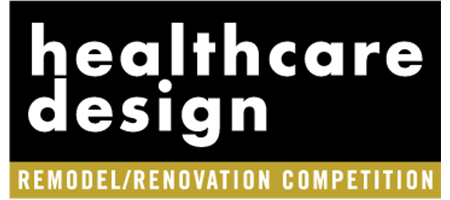Why are costs so high? Why is delivery late? Almost everyone involved in capital programming of a healthcare project will hear these questions at some point during their career. Experienced professionals know how many answers such simple questions can have.
Capital program implementation involves the planning, funding, design, construction, commissioning, and closeout of multiple projects over the course of several years to improve or expand an organization’s property portfolio.
Common challenges include supply chain issues and rising costs in the labor market. But beyond that, misunderstanding compliance requirements can complicate these programs by delaying the start of planned projects, blurring project goals, or limiting a capital program team’s ability to maintain schedules and budgets. This is especially true in healthcare, where state-of-the-art facilities and equipment are crucial to an organization’s success.
Proper planning that acknowledges and maintains environment of care standards can overcome these challenges and keep projects on track while ensuring the safety and well-being of patients, staff, and visitors.
Digging into The Joint Commission’s Environments of Care standards
The Joint Commission’s (TJC; Oakbrook Terrace, Ill.) Environment of Care (EOC) standards address air quality, domestic water quality and temperature, fire prevention, infection prevention and control, and more. Compliance with these measures is necessary for hospital accreditation and, consequently, access to federal funding. More importantly, TJC’s EOC standards provide a benchmark to help ensure safe, healthy care settings and patient safety in our nation’s healthcare facilities.
A correct and consistent interpretation of TJC’s EOC standards is necessary for a capital program’s success. Specifically, all program stakeholders and authorities having jurisdiction (AHJs), such as Centers for Medicare & Medicaid Services (CMS; Baltimore), the fire marshal, or, in California, the Department of Health Care Access and Information (HCAI; Sacramento, Calif.), must understand the relevant EOC standards, their rationale, and how they apply to project-specific conditions. This can include the intended use of various spaces within a planned facility and how different environments within a healthcare facility interact.
Misinterpretation of EOC standards or miscommunication of program requirements can result in skyrocketing costs, long delays, frustration and reduced trust among program delivery team members, and hazardous care settings. Even when inspectors identify building components out of compliance with EOC standards, necessary rework and construction delays can temporarily limit planned hospital capacity or the adoption of new equipment.
During a review of a capital construction project at a children’s hospital in the Midwest, for example, a local fire marshal determined that owner-driven changes midway through construction necessitated an additional stairwell to meet EOC fire safety requirements.
Bringing the facility into compliance at this stage extended the project timeline and severely impacted the budget. By conducting routine reviews of all changes, experienced inspectors and life-safety professionals on the project team could have recognized the need for another stairwell and addressed it earlier, reducing the impact on the schedule and budget.
TJC requires EOC updates
To pave the way for a successful capital program, healthcare leadership must maintain a strong grasp of their organization’s EOC standards. TJC requires healthcare organizations to maintain a formal management plan to be reviewed, at a minimum, annually. Whether or not capital projects are in the pipeline, healthcare leaders should continuously interpret their standards and TJC recommendations, implement appropriate policies, and monitor for operational adherence.
This assessment requires leaders to regularly collaborate with different members of the healthcare ecosystem, including doctors, nurses, staff, and patients. Dialogue with end users allows owners to take a realistic ground-level view of the healthcare environment.
For example, staff and patients will often be the quickest to identify uncomfortably hot or cold spaces in a healthcare facility. Conducting surveys and regularly engaging with staff to gather feedback can enable owners to plan, finance, and execute projects that promote a safe, comfortable, end user-oriented EOC in the context of their overall capital planning.
As capital planning matures, healthcare leaders must share details about their facilities and planned patient environments, along with the rest of their design criteria, with the design team. Even designers who understand the nuances of healthcare facilities will not automatically share their client’s exact vision for the implementation of EOC standards.
For example, standard EC.02.06.01 EP 1 states: “Interior spaces are safe and suitable to care, treatment, and services provided.” A successful healthcare design may meet this standard—which covers lighting, room and hallway configuration, noises, smells, and more—in a multitude of ways.
By supplying designers with sufficient details about the unique conditions in their facilities, healthcare leaders can reduce the potential for misinterpretation or misunderstanding. This process can also help to facilitate the development of a design that responds to their organization’s specific needs and to enable more accurate cost estimates, scheduling, and stakeholder expectations.
Hospital training and communication plans
Even an airtight design that conforms to a healthcare organization’s vision and all TJC requirements can be thrown out of compliance by changes made in the field. A contractor with healthcare expertise may recognize changes that result in conflicts with EOC standards, but, in general, contractor resource training does not focus on such considerations. Healthcare organizations should plan and deliver training for capital project managers.
By procuring experienced professionals and providing training on hospital culture and capital program policies, healthcare leaders can enable project managers to act as a seamless extension of their organization’s staff, accurately representing their interests and sharing their interpretation of standards during everyday construction activities.
Project management training may not appear to be a budgetary priority during capital planning, but it has a direct impact on project performance. The cost of training is miniscule compared to the savings that can be realized through the prevention of costly, avoidable errors.
A steering team, including executive stakeholders and a third-party owner’s representative, can also help healthcare organizations address some of the challenges associated with managing standards and their interpretation during capital construction.
Prior to design, the steering team can develop and implement a formal communications plan to better gather information from doctors, nurses, staff, and patients and liaise with stakeholders to generate a unified interpretation of EOC standards.
The owner’s representative can help ensure that the organization’s needs are reflected in design documents and independently verify all cost and schedule estimates. During construction, the steering team can collaborate to manage change and anticipate challenges associated with TJC standard compliance, thus preventing or mitigating potential cost increases or delays.
TJC’s EOC Compliance success
Taking these steps will help organizations deliver better capital programs in which projects are completed on time, within budget, and to the specified quality. Capital program success, in turn, delivers improved facilities that offer exceptional settings for patient care and new equipment that allows for first-to-market opportunities and improved patient outcomes.
Compliance with TJC’s EOC standards also contributes to continued eligibility for CMS reimbursement and, in some states, is a requirement for hospital licensing. Additionally, responsible stewardship of capital funding can lead to an increase in philanthropy, enhanced public trust, and bolstered recruiting efforts—the biomarkers of a healthy healthcare organization.
Steven Walker is a project executive at Hill International Inc. (Philadelphia) and can be reached at [email protected].












